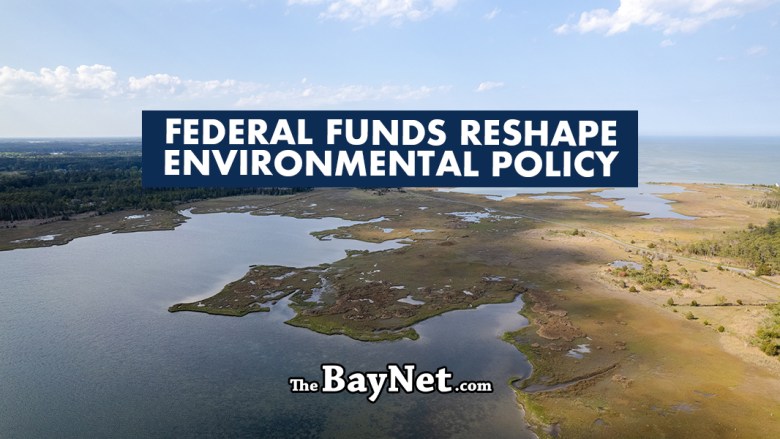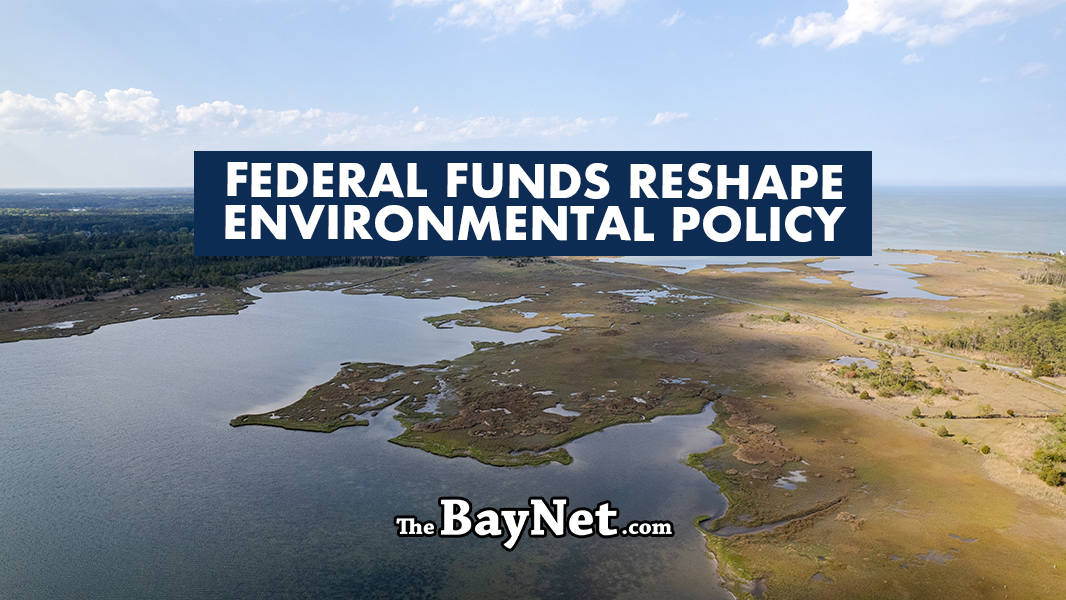 Background photo from Envato
Background photo from Envato
WASHINGTON — Recent federal initiatives have directed billions of dollars into environmental programs, with funding allocated toward clean energy expansion, pollution control and climate resilience. The Inflation Reduction Act and the Bipartisan Infrastructure Law represent the largest federal investment in climate action in U.S. history. These initiatives are supporting projects nationwide, including in Maryland, where funding is being used for renewable energy expansion, waterway restoration, air quality improvements and climate adaptation efforts.
The Environmental Protection Agency has allocated $206 million to the Chesapeake Bay Program, the largest single investment in its history, to support watershed protection, habitat restoration and agricultural runoff reduction. The Maryland Clean Energy Center received $62.4 million through the Greenhouse Gas Reduction Fund’s Solar for All program to increase solar energy access for low-income households. These funds are expected to lower electricity costs and create local clean energy jobs. The Department of Energy has approved $15 million in federal grants for Maryland to expand electric vehicle charging infrastructure, part of the state’s broader plan to transition toward renewable energy and meet future emission reduction targets.
In Baltimore, the Maryland Department of the Environment received $498,000 under the EPA’s environmental justice grant program to monitor and reduce air pollution in historically impacted communities. The initiative aligns with the Justice40 program, a federal directive ensuring 40% of environmental funding benefits disadvantaged areas.
At the national level, the Inflation Reduction Act has resulted in more than $282 billion in private clean energy investments, funding new manufacturing plants for solar panels, wind turbines and electric vehicle batteries. The Department of Energy has issued grants and tax credits to more than 280 new clean energy projects across 44 states. These investments include domestic clean energy production, workforce training programs and infrastructure improvements.
The Federal Emergency Management Agency has announced $1 billion in climate resilience grants under the Building Resilient Infrastructure and Communities program, funding flood prevention, wildfire mitigation and storm-proofing projects nationwide. The National Oceanic and Atmospheric Administration has allocated $575 million to support coastal resilience projects in regions vulnerable to sea-level rise and severe storms. Maryland is among the states utilizing these grants to reinforce shorelines and upgrade flood control infrastructure.
Despite the scale of these investments, challenges remain in distributing and implementing funds. Many state and local governments must navigate complex application processes, often competing for funding that prioritizes shovel-ready projects over long-term planning efforts. Smaller municipalities, which may lack the staffing or technical expertise to meet application requirements, often struggle to secure grants. Even for states that embrace federal funding, hurdles such as lengthy permitting timelines, outdated grid infrastructure and workforce shortages complicate execution.
Maryland, for example, is investing in transmission upgrades to support new renewable energy sources, but existing grid congestion could delay project implementation. Additionally, environmental reviews and zoning regulations, while essential for sustainable growth, can slow construction timelines for solar and offshore wind farms. Workforce availability remains a concern as the state scales up its clean energy sector, requiring expanded training programs to meet labor demand.
With continued federal funding, Maryland stands to benefit from long-term investments in clean energy, climate resilience and environmental protection. The influx of federal dollars is expected to accelerate Maryland’s goals to cut greenhouse gas emissions and transition away from fossil fuels. However, success will largely depend on how efficiently funds are allocated and how well local and state agencies can integrate new infrastructure projects into existing frameworks.
Maryland’s coastal resilience efforts, for example, rely on a combination of federal grants and local initiatives to implement flood defenses and stormwater management solutions. Similarly, the expansion of electric vehicle infrastructure must align with consumer adoption rates and utility grid capacity to ensure a seamless transition.
As new projects break ground, stakeholders will be watching to see whether federal investments can deliver the anticipated environmental and economic benefits. While these historic funding levels present an opportunity for transformative change, their long-term impact will hinge on effective execution and sustained political support.
Contact our news desk at news@thebaynet.com
Related
